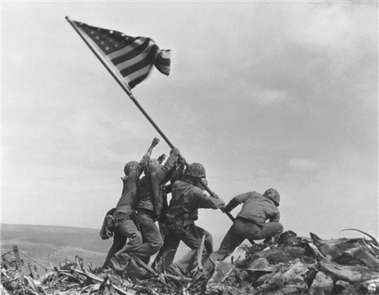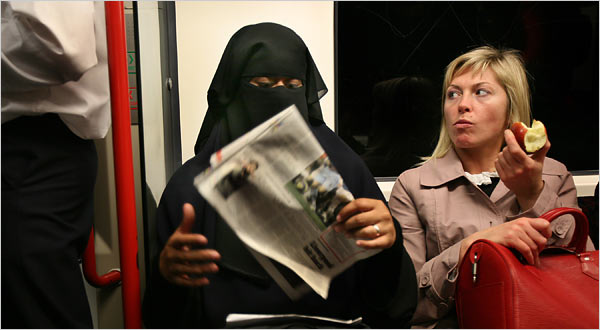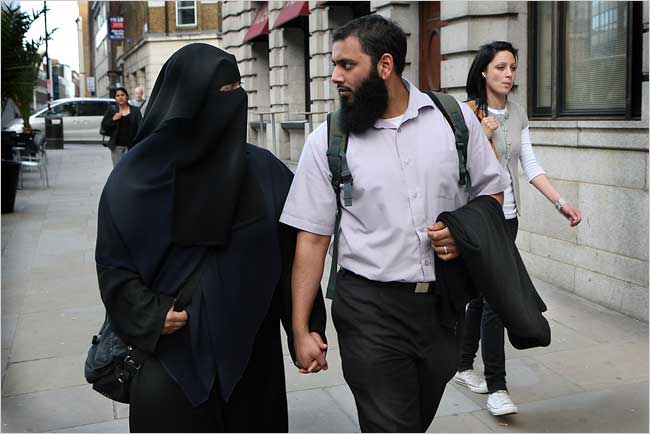For a glimpse of the future, click here to see an 8 minute video on digital composition software that can combine many thousands of photographs to create composite images. That’s a very rough description, of course. The slam dunk example is an image of Notre Dame made up of many snapshots and other images, each of which can be accessed through a zoom technology. As the designer points out, this is not just a slick piece of software but rather a medium for developing collective experience. I found it to be a beautiful example of how images record intersubjective reality. What is true of the Photosynth composite also applies to individual images and can be brought to the surface through interpretation: the image is a composite of collective experience, which is the result of many overlapping interactions though which we establish what is real. Marcel Henaff and Tracy Strong have made the point succinctly: “The Internet makes real the virtual, not the reverse” (Public Space and Democracy, p. 224.).
Iwo Jima: fact or fiction
A letter to the editor of this month’s Journal of American History is the most recent example of a typical debate about how to interpret iconic photographs. The author, Robert W. Gabrick, writes:
The recent release of Flags of Our Fathers (2006) and Letters from Iwo Jima (2006) caused me to revisit Paul C. Rosier’s article, “‘They Are Ancestral Homelands,'” in the March 2006 JAH, which featured Joe Rosenthal’s famous photograph of the Iwo Jima flag raising. The caption in the article declares, “Ira Hayes (a Pima) is not quite reaching the flag, his pose an unintended symbol of his inability to secure basic rights after returning home to New Mexico” (p. 1304).
The person Rosier identifies as Pfc. Ira Hayes is, according to an Associated Press print, Pfc. Franklin R. Sousley. Hayes is not the last person on the left, but the second figure on the left. Hayes has both hands firmly on the flag’s staff. As a result, the photograph does not offer Hayes’s “pose” as a “symbol of his inability to secure basic rights after returning home to New Mexico.” . . .
Unfortunately, there is reason to believe that the fact-checker is wrong. If I recall correctly, Bradley’s Flags of Our Fathers makes a good case, right down to pointing out that the blanket hanging from the last figure’s belt was an adaptation of traditional Pima dress.
The letter goes on:
It is also important to keep in mind that at one point all of the men in the photograph had their hands on the flag’s staff and that eventually the hands of all of the men would not be “reaching the flag.”. . .
A good point, but a small one. Any symbolism depends on what is in the picture, and what was there or not there moments before or afterwards can in fact carry very different implications. But, of course, the image is used because of what it signifies. Earlier and later images were available on the same roll of film, but they were not chosen.
The next point focuses on a persistent myth about the Iwo Jima photograph:
The caption states: “The presence of Hayes in this staged event also came to symbolize ethnic integration” (ibid.). The characterization of the action depicted in the photograph as a “staged event” offers an interpretation equally problematic. That it was “staged” suggests that the entire episode was mere propaganda. My research suggests the photograph was more the result of fortunate circumstances. Lou Lowery, a Marine photographer, had photographed an earlier flag raising. The opportunity for Rosenthal developed because Lt. Col. Chandler Johnson wanted a larger flag on top of Mt. Suribachi. He gave the flag to Pfc. Rene Gagnon, barely visible behind Pharmicist’s Mate Second Class John Bradley, second from the right. Rosenthal took a series of photographs of this second flag raising. He sent the film to Guam for developing, and the photograph was already widely published before he ever saw it.
That’s the correct account as Bradley and others have documented it, but the idea that the iconic image was staged will not go away. There will be several reasons for its persistence, but one of them may be that the term “staged” inadvertently touches a deep truth about iconic images, which is that they are performative. So it is that people can talk past one another: if you see a photo only as a representation, then you want to know if it is accurate; if you understand that the photo (and not the event depicted) also is a performance in a public space, then you need to appreciate how it works artistically, emotionally, symbolically . So it is, perhaps, that the author of the original article was disposed to use the term “staged,” and why Gabrick would not want to see it that way. He concludes:
Rosier’s use of the photograph to link Hayes to the larger issues he raises is faulty. The use of photographs to advance a particular point of view is acceptable only if the factual basis for the interpretation is established.
Well, yes and no. Iconic images are used to advance many points of view, most of which can’t be dismissed solely be reference to a factual basis of interpretation. More to the point, publics use photographs as both fact and fiction, documentary witness and parables for interpretation. Both are important. Both need to be true, but truth does not follow a single set of criteria, even when it seems to be something that you can see.
American Faces
The June 2007 issue of the Journal of American History includes a series of articles on the use of photographs in collective memory and historical scholarship. The issue, which is entitled American Faces, includes:
“Introduction,” by Donna Drucker and Edward Linenthal (pp. 97–8)
“Worth a Billion Words? Library of Congress Pictures Online,” by Barbara Orbach Natanson (pp. 99–111)
“Religious History and Visual Culture,” by Colleen McDannell (pp. 112–21)
“The Times Square Kiss: Iconic Photography and Civil Renewal in U.S. Public Culture,” by Robert Hariman and John Louis Lucaites (pp. 122–31)
“‘The Day in Its Color’,” by Eric Sandweiss (pp. 132–42)
“Visual Literacy by Michael Lesy,” (pp. 143–53)
“An American Atrocity: The My Lai Massacre Concretized in a Victim’s Face,” by Claude Cookman (pp. 154–62)
“Where Are Our Fathers?” by Ted Englemann (pp. 163–71)
“An Image from Oklahoma City,” by David Allen (pp. 172–78)
“Remembering the Oklahoma City Bombing,” by Anthony Fernandez (pp. 179–82)
“The Public Face of 9/11: Memory and Portraiture in the Landscape,” by Jonathan Hyman (pp. 183–92)
“Image and Artifact: The Photograph as Evidence in the Digital Age,” by Martha A. Sandweiss (pp. 193–202)
Full texts (and images) are available online.
Paper Call
Conference on Visual Democracy I: Image Circulation and Political Culture
The Center for Global Culture and Communication at Northwestern University will sponsor a conference on Visual Democracy this November 2-4, 2007. The conference will feature plenary addresses by scholars in anthropology, art history, communication studies, gender studies, and other disciplines, as well as concurrent presentations. Speakers include Ackbar Abbas, Jean-Paul Colleyn, Beatriz Jaguaribe, Wendy Kozol, David Lubin, Alona Nitzan-Shiftan, Christopher Pinney, Maren Stange, and Marita Sturken.
Scholars who wish to be included in the concurrent sessions are invited to submit abstracts by August 15, 2007. Those selected for presentation will be notified by September 1.
The study of visual culture increasingly foregrounds two significant assumptions. The first is that, contrary to the hermeneutics of suspicion characterizing both ideology critique and theories of the public sphere, visual images can provide important resources for democratic politics. “Visual democracy” goes beyond instrumental use by elites and documentary witness by the press to also include diverse actors, media, practices, audiences, and functions. The second assumption is that visual images are the leading edge of technologies and practices of circulation that are becoming increasingly characteristic of all media use in a global communications environment. These circuits can be large and small, public and private, legal and pirated, stable and ephemeral, serious and comic; as images circulate within and across social networks, political identity, agency, and solidarity can be gained and lost. This conference will explore these assumptions and related claims about the role of visual practices in political cultures around the globe.
The conference is the first of two that will lead to publication of a university press book to be edited by the conference organizers. All papers presented will be eligible for consideration for publication. Applications for presentation, including a letter and a two-page, single-spaced abstract, should be sent to Robert Hariman at
r-hariman2@northwestern.edu. The conference will be held on the campus of Northwestern University in Evanston, Illinois. Inquiries about attendance should be sent to Patrick Wade, wpatrickwade@gmail.com.
The Visual Public Sphere
By Jane Perlez
Published: June 22, 2007
LONDON, June 16 — Increasingly, Muslim women in Britain take their children to school and run errands covered head to toe in flowing black gowns that allow only a slit for their eyes. On a Sunday afternoon in Hyde Park, groups of black-clad Muslim women relaxed on the green baize lawn among the in-line skaters and badminton players.
Their appearance, like little else, has unnerved other Britons, testing the limits of tolerance here and fueling the debate over the role of Muslims in British life.
This story is a fascinating example of how public life in liberal-democratic societies depends on specific norms of visibility. Why is wearing the niqab in public so transgressive? The mere fact of cultural difference will account for some of the reactions, of course, but not for the intensity of the emotions involved. Consider also that the woman under the veil could be seen to be enacting her right to privacy. That liberal norm can’t come close, however, to balancing the profound rupture that occurs simply by denying others the opportunity to see you in public. The veil says that one is there but not there, present yet being withheld. This image threatens, perhaps because it creates a different kind of stranger than what we are used to as we pass one another on sidewalks and other public spaces. Or perhaps it challenges the idea that we are surrounded by individuals rather than types, groups, classes . . . Individuality requires constant social construction, not least through our use of images. In any case, the niqab demonstrates how important it is to see and be seen according to culturally specific norms of visibility, and how political cultures differ in part by having different optics, and how liberal-democratic public culture depends on continual iteration of norms of individual expressiveness and social transparency.
One sign of social rupture is to that repair strategies follow. In the New York Times slide show, one can follow veiled women as they go around London. We see them shopping, riding an escalator, etc. Then, the last image:
The traumatic image of an unknowable woman acting on her own has been replaced with a heteronormative snapshot of a woman and her husband holding hands. She now can be read through him, and he is at least visible and somewhat legible.
The gender politics of this issue are very complicated, as feminism gets entangled with colonialism, and others can go there better than I can. Note, however, how this dimension plays out in the two photos, and not innocently. In the first image, the fundamental antagonism is portrayed as if between two women: the emancipated woman against one under the veil. Guess which one is unhappy? In the second, social acceptance and personal happiness comes tied to a reassertion of patriarchy, which now acquires new significance as the male bears the weight of the social gaze.
Soft News from Iwo Jima
By Eric Taldadge, Associated Press Writer
TOKYO – A U.S. search team on Iwo Jima is slashing its way through thick, thorny brush to find a cave where the Marine combat photographer who filmed the iconic World War II flag-raising is believed to have been killed by machine gunfire.
It’s the first American search of the remote Japanese island in 60 years. The team is seeking the remains of Sgt. William H. Genaust and other Marines who died in the battle for Iwo Jima, a turning point in the war with Japan.
This is today’s example of how icons generate stories. Often they are stories of the people photographed or the photographer, or of how photographer and those in the picture developed a relationship in later years. The iconic image seems to create a need for narrative continuity and closure. The image may create a social rupture or simply a need for to know more about those we become attached to, but the stories always appear and keep appearing. This story of a second cameraman, one all but forgotten, may demonstrate the historical and emotional depth that the Iwo Jima image has acquired.
TaDa!
We’re up and running. To or from what, I’m not so sure, but surely the first post should be to thank those who made this blog possible. My colleague Irv Rein, author of The Elusive Fan, was the first to suggest that an academic book could have a second life on the Web. That suggestion would have remained merely an idea but for Yogi (Bob Yovovich), who was the perfect pest, the burr under the saddle, the guy who wouldn’t take no for an answer. The guy who made it happen was David Huffaker, a grad student in Northwestern’s Media, Technology, and Society program; David is a model of how to be both skilled and good natured. Thanks to all.


